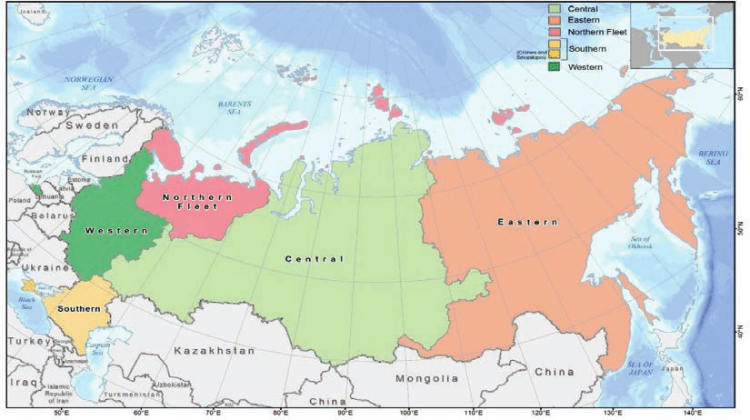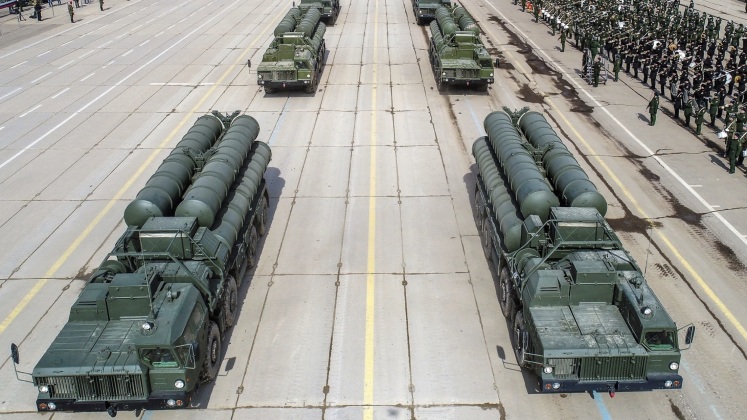The Russian Military has redeployed a number of high performance assets across its territory from its Far Eastern regions to the frontlines with the NATO alliance in Europe, as tensions with the West have continued to escalate. Russia’s western regions have been prioritised for deployments of its most capable assets for decades due to multiple factors including the concentration of the majority of the country’s industry and economy in the west as well as perceptions of the primary threats to the country as coming from European powers and the United States. Historical reasons have also been considered a factor, with the two major invasions of Russian territory which threatened the nation’s existence both having come from large coalitions of European states, the first led by France under Napoleon Bonaparte and the second led by Germany under Adolf Hitler. The deployment of forces within Russia has nevertheless varied depending on perceived threats. A notable example was the deployment of high end air defence systems and other more capable assts near the Korean Peninsula in 2017 at a time when Moscow sought to draw a red line against a possible U.S.-led Western attack on North Korea neighbouring the Russian Far East. The Russian Military held large scale exercises in the region at the time as a signal to potential adversaries when tensions between Washington and Pyongyang peaked.

For Russia’s ground forces in particular the country’s Western Military District has continued to receive priority for deployment of the most capable equipment, in part because of the lower importance of conflict on the ground in other strategically significant theatres such as the Arctic and Pacific where geography dictates wars will primarily be decided in the air and at sea. To reinforce its forces in Europe, the most notable redeployments of Russian assets have been of Su-35 fighter aircraft and S-400 air defence systems from the Far East. The deployment of S-400s was first reported on January 21st, and reportedly included two battalions which would be transferred by train. These would notably not be deployed to Russian territory itself, but rather to Belarus where the Russian Military has deployed growing forces as the two countries’ armed forces have become more closely integrated. The S-400 is considered one of Russia’s three most capable long range air defence systems alongside the S-500 and S-300V4, with the Belarusian Military expected to deploy growing numbers of its own S-400s for its defence after purchases from Russia were widely reported in late 2021.

Deployment of Russian S-400s to Belarus provides an opportunity to further familiarise the Belarusian armed forces with operations alongside the system, and allows Russian forces to engage targets deeper into Europe with the system’s 400km targeting range. Deployments of the longer range S-500 system to Belarus, or even a sale to the Belarusian Military, have been speculated and would provide coverage that is significantly deeper still at 600km. The S-400 has increasing formed the backbone of Russia’s aerial warfare capabilities, compensating for both the much smaller size of the Russian Air Force’s fighter units relative to NATO compared to the Soviet era as well as delays in moving past fourth generation designs to field next generation aircraft. The system is prized for its ability to engage hypersonic targets, engage up to 80 targets simultaneously, neutralise stealth aircraft due to its high situational awareness, and remain highly mobile to maximise survivability.

Complementing S-400 deployments, the Russian Air Force subsequently redeployed Su-35 fighters from the Far East to Baranovichi Airfield in Belarus, with this forward position placing all of Europe within their range. The fighters were designed with engagements against Western stealth aircraft in mind and deploy sensors well optimised to tackle such targets including the Irbis-E radar, two L-band AESA radars and the OLS-35 infra red search and track system. The Su-35 has over double the engagement range of its most capable American rivals, with its R-37M missiles able to neutralise targets 400km away where the longest ranged American missile the AIM-120D has an estimated 160-180km range. Combined with the Su-35’s advantages in endurance and manoeuvrability over Western aircraft these strengths make its deployment worthy of note, although the fighters remain significantly outnumbered by NATO jets. The possibility remains that Russia will retain a larger strength in Belarus focusing on aerial assets, at least until the Belarusian Air Force can modernise its own predominantly Soviet era inventory. While the S-400 is a relatively affordable asset, however, the possibility of a Belarusian acquisition of any fighter as capable as the Su-35 remains low unless offered at much lower price by Russia.
